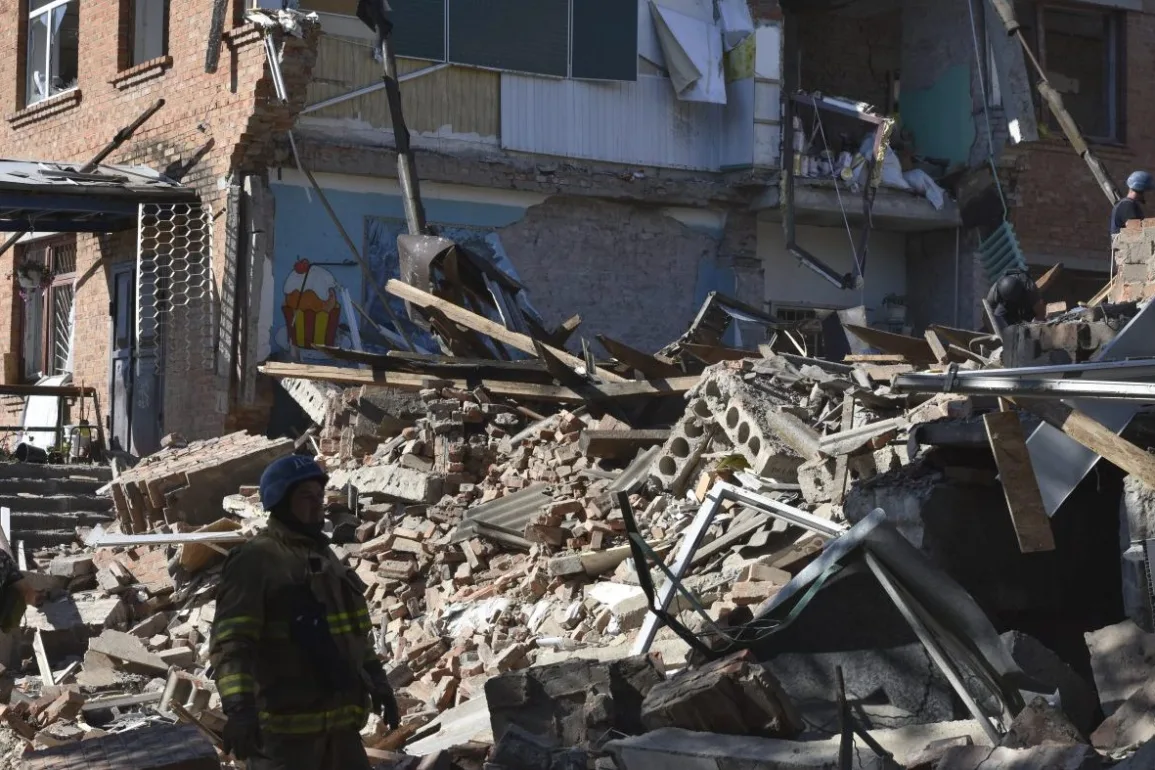The views expressed by contributors are their own and not the view of The Hill

Ukrainian emergency services work next to buildings destroyed during the Russian strike on Sunday in the town of Orikhiv, Zaporizhzhia region, Ukraine, Monday, July 10, 2023. (AP Photo/Andriy Andriyenko)
Evildoers should pay for their evil. By this logic, Russia owes Ukraine huge sums to compensate for the death and destruction it has wrought.
The U.N. General Assembly adopted a resolution on Nov. 14, 2022, that calls for Russia to pay war reparations to Ukraine. The resolution stated that Russia “must bear the legal consequences of all its internationally wrongful acts, including making reparation for injury, including any damage, caused by such acts.” It called for establishing an international mechanism for compensation for damage, loss and injury, as well as a register to document evidence and claims. The total due and the methods for repayment could be established by a U.N. agency like the Compensation Commission, which administered Iraq’s reparations to Kuwaitis caused by its invasion in 1990.
How much does Putin’s Russia owe Ukraine for lives and property damaged by its “special military operation”? Assume that each life in Ukraine is worth just $1 million. Begin with the 22,000 killed in Donbas fighting between 2014 and February 2022. Add the low estimate of 100,000 civilians and soldiers killed from 2022 to 2023. Add $1 million reimbursement for those wounded and $100,000 for those displaced internally and abroad.
Here is a provisional summary:
122,000 killed at $1 million: $122,000,000,000
122,000 wounded/incapacitated at $1 million: $122,000,000,000
16 million displaced at $100,000: $1,600,000,000,000
Total damages to human life, 2014 to 2023: $1,844,000,000,000
This bill for nearly $2 trillion includes nothing for grief and post traumatic stress disorder, or for losses of education, earnings and fun. How to put a price tag on the trauma in children who no longer speak and miss school and social development? How to price the discomfort of Ukrainians who feel helpless when they look at the mounds of vodka bottles and other trash left by departing Russian soldiers? The feelings of the elderly physically unable to move with their children and grandchildren to a safer location?
The bill also omits any charges for the 9 million Ukrainians killed under Lenin and Stalin from 1917 to 1953. It omits any reimbursement to Western countries for the $100 billion or more in aid they gave to Ukraine to cope with Russian attacks. It asks nothing for the people in the developing world who went hungry or died because Russia obstructed exports of Ukrainian grain. It says nothing about the debt the Kremlin should also pay to its own subjects for the 200,000 or more soldiers killed or wounded in this unprovoked war and the sufferings of their families.
This bill also omits compensation for Chechens, Georgians and other minorities killed since the end of Soviet power in 1991. It omits any reckoning for the Chechens, Tatars and others forcefully moved to Central Asia in the 1940s, many — perhaps half — of whom died during the moves.
It is difficult to gauge the value of what Russia has destroyed and what it will cost to rebuild. By mid-2022 — just in the Kyiv area — damaged assets included 167 schools, 122 hospitals, nearly 900 miles of roads and residential areas covering 7.451 million square meters.
President Volodymyr Zelensky estimated on Sept. 6, 2022, that more than $1 trillion will be needed to rebuild Ukraine, declaring that it “will be the largest economic project in Europe of our time.”
The cost of environmental destruction also runs into billions of dollars. There is degradation from munitions and fires that poison water, air, urban areas and farmland; fish, animals, birds, and insects poisoned, starved, bombed or shot.
Bottom line: More than $2 trillion will be needed to compensate Ukrainians for damage to lives, material goods and the environment. The longer the destruction continues, the higher the bill. Besides destruction, there is product lost. In 2020, Ukraine’s GDP grew by about $2 billion. If war costs it $2 billion in growth for each of five years, that adds up to $10 billion.
How can Russia meet its obligations with an economy that contributes less than 3 percent of global GDP — less than 1/16th that of the United States or China? Russia — despite its relatively small GDP, declining growth and brain drain — could, over time, use its sales of oil and other commodities to indemnify Ukraine. Despite the bite of sanctions, Russia still earns huge sums from foreign trade.
The main problem is not Russia’s ability but its willingness to pay. The Putin regime admits to no war crimes, so it must be replaced before any agreement can be reached on reparations or other war-related issues. Justice for Putin and reparations for Ukraine require Russia’s defeat. Any compromise that helps Putin stay in power must be rejected. The interests of law and human rights require that war crimes and criminals be punished.
Walter Clemens is an associate at the Harvard University Davis Center for Russian and Eurasian Studies and Emeritus Professor of Political Science at Boston University. He is the author of “Blood Debts: What Putin and Xi Owe Their Victims.”
history
Reparations
Russia
Soviet Union
Ukraine
United Nations
Vladimir Putin
Vladimir Putin
Volodymyr Zelenskyy
War
Copyright 2023 Nexstar Media Inc. All rights reserved. This material may not be published, broadcast, rewritten, or redistributed.



